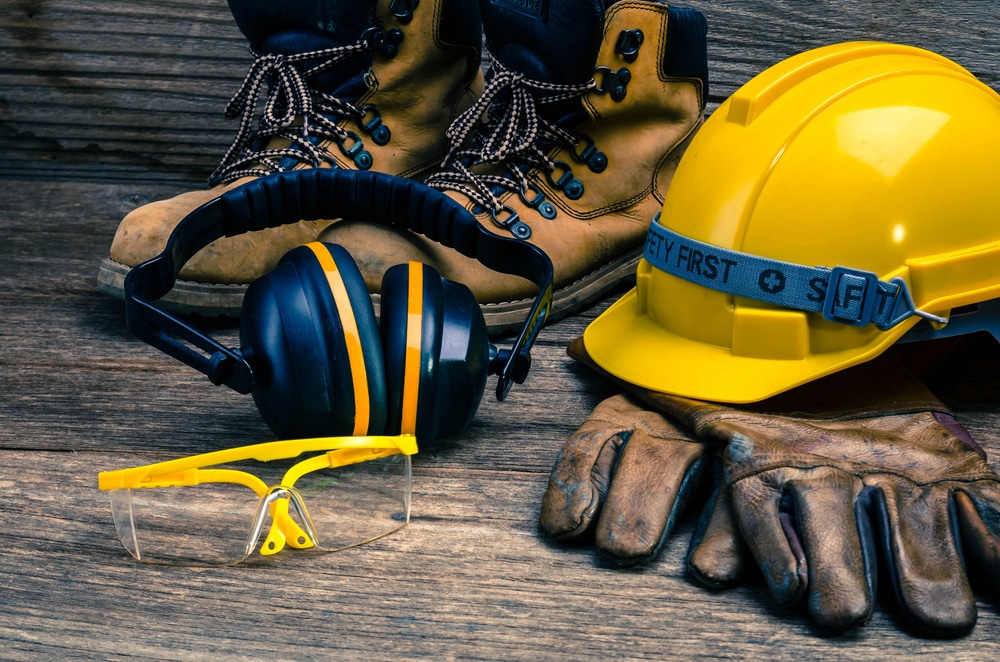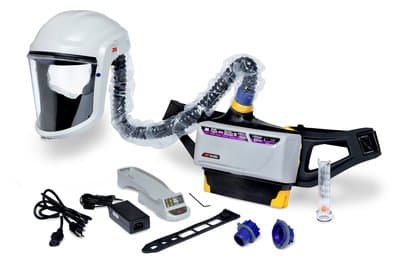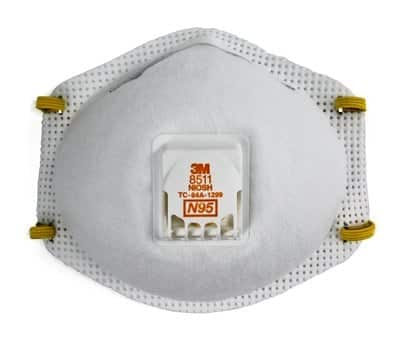- Abrasives and Accessories
- Adhesives, Sealants and Accessories
- Cleaning Supplies and Equipment
- Drill Bits and Accessories
- Electrical Items
- Hardware and Fasteners
- Health and Safety
- Lubricants and Penetrants
- Manufacturers
- Masking Products
- Office Supplies
- Packaging and Shipping
- Paint Application Products
- Painting Equipment and Supplies
- Polishing and Buffing
- Tapes, Films and Accessories

Personal Protection Equipment (PPE): Who Needs It and Who Pays for It?
January 4, 2024
Navigating the realm of personal protection equipment (PPE) is a crucial aspect of your operational strategy. As a business with employees taking on potentially dangerous physical tasks, you are a responsible entity in charge of overseeing the safety and well-being of those employees. PPE serves as a shield against various workplace hazards, ranging from chemical exposure to physical risks, and plays a pivotal role in averting severe injuries or illnesses.
This article discusses the vital aspects surrounding PPE in the workplace based on the guidelines from the Occupational Safety and Health Administration (OSHA). From understanding regulatory requisites to emphasizing the pivotal role of employers, we delve into workplace safety through comprehensive PPE implementation.
Who Needs Personal Protective Equipment (PPE)?
In diverse work environments, the necessity for PPE arises from the presence of potential hazards. Employees working in industries such as construction, manufacturing, healthcare, laboratories and even offices with specific occupational risks require tailored PPE. The type of gear needed varies depending on the nature of the work and the potential risks involved.
Identifying Workplace Hazards
- Chemical Hazards – Workers handling chemicals or exposed to fumes, gasses, or liquids necessitate specialized gloves, goggles, face shields, or chemical-resistant suits.
- Physical Hazards – Workplaces with machinery, falling objects, or electrical equipment demand protective gear. Safety glasses safeguard against flying debris, while hard hats shield from head injuries. Earplugs are vital for noise reduction in loud environments.
- Biological Hazards – Healthcare professionals or those working with biological agents need gloves, masks, gowns and eye protection to prevent exposure to infectious materials.
- Radiological Hazards – Environments using radiation sources, like nuclear facilities or radiology departments, require specialized PPE. Lead aprons, gloves and protective eyewear shield against radiation exposure.
- Environmental Hazards – Outdoor workers facing extreme temperatures or harsh weather conditions require specialized clothing. This could include heat-resistant gear, insulated clothing for cold climates or waterproof attire to protect against moisture.
Employer Responsibility and Payment for PPE
In compliance with OSHA standards, employers are generally obligated to bear the costs associated with providing PPE. Exceptions are limited and primarily pertain to safety-toe protective footwear and prescription safety glasses, which are considered highly personal and might be worn beyond the job site.
Other Employer Responsibilities in PPE Implementation:
- Hazard Assessment – Employers are tasked with conducting comprehensive hazard assessments within their work environments. This assessment involves identifying potential risks and determining the appropriate types of PPE necessary to mitigate these risks, a proactive step toward ensuring a safe workplace.
- PPE Selection – Once hazards are identified, employers must select the appropriate PPE that adequately protects employees. This involves considering factors such as the nature of the hazard, durability of the equipment, comfort for prolonged wear and compliance with industry standards.
- Provision and Maintenance – Employers should provide the selected PPE to employees at no cost. Additionally, ensuring the proper maintenance, repair and replacement of PPE is crucial for its effectiveness. Regular checks for wear and tear, cleanliness and functionality are essential to guarantee ongoing protection.
- Training and Education – Comprehensive training programs are imperative. Employers must educate their workforce on the proper use, limitations and maintenance of PPE. Employees need to understand why specific gear is necessary, how to correctly wear and adjust it and when to replace it.
- Enforcement and Monitoring – Establishing policies that mandate the use of PPE and enforcing these policies consistently are essential. Regular monitoring of compliance ensures that employees adhere to safety protocols and utilize PPE effectively.
- Periodic Review and Update – Work environments evolve and so do hazards. Employers should regularly review and update their PPE program in response to changes in work conditions, technology, or regulations to ensure continued effectiveness.
Prioritize Workplace Safety With Effective PPE from JAM Industrial Supply
PPE serves as a crucial shield against hazards. Employers, mandated by OSHA standards, bear the responsibility of ensuring the provision, maintenance and proper use of PPE. Moreover, compliance is more than just about meeting regulations; it’s a commitment to safeguarding employees’ lives.
At JAM Industrial Supply, we support businesses in upholding workplace safety standards by supplying a range of compliant PPE solutions. Together, let’s create work environments that prioritize employee well-being through robust PPE implementation.
Click here to view all Health & Safety products, including hygiene kits, organic vapor monitors, hearing protectors and more.


